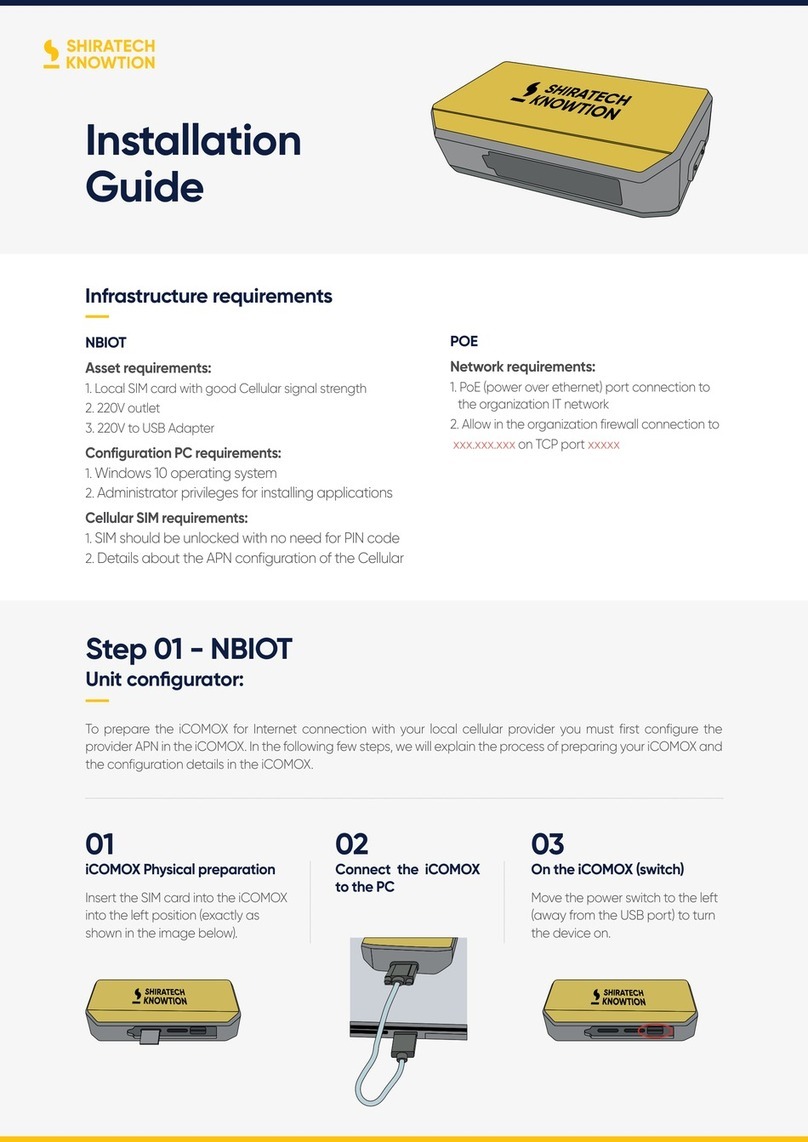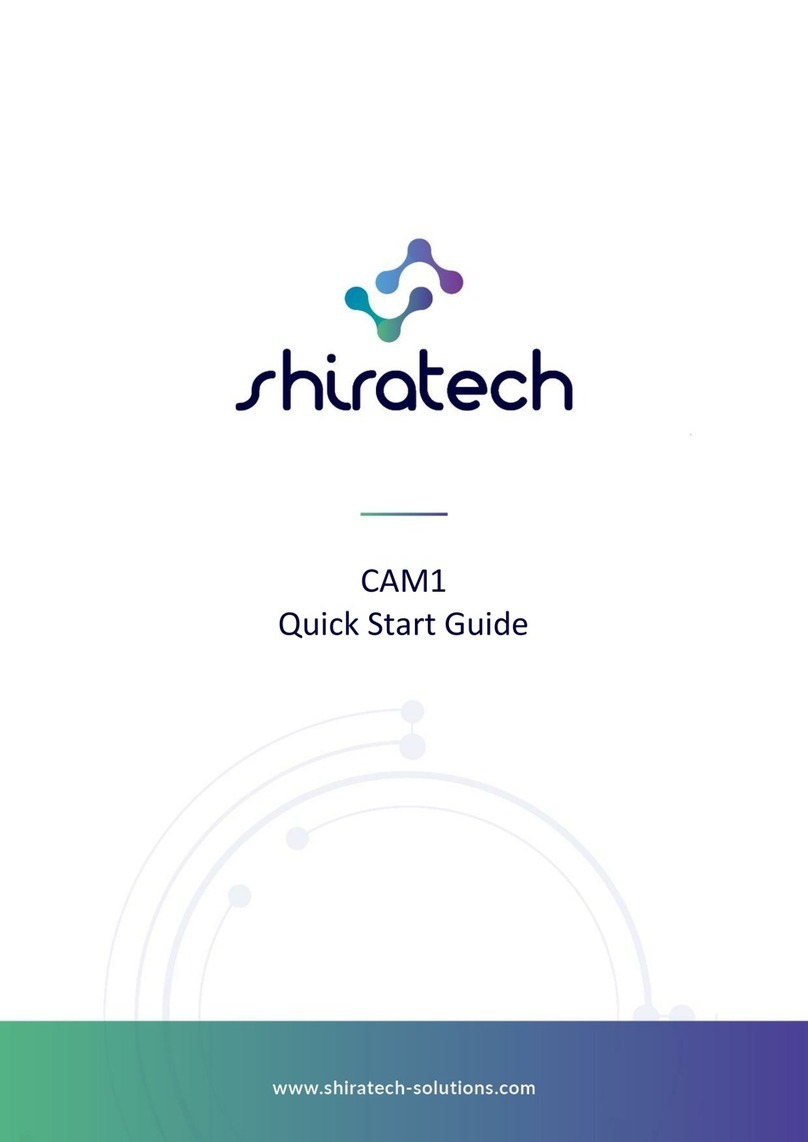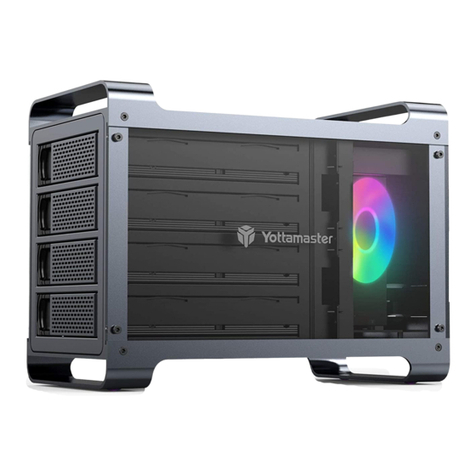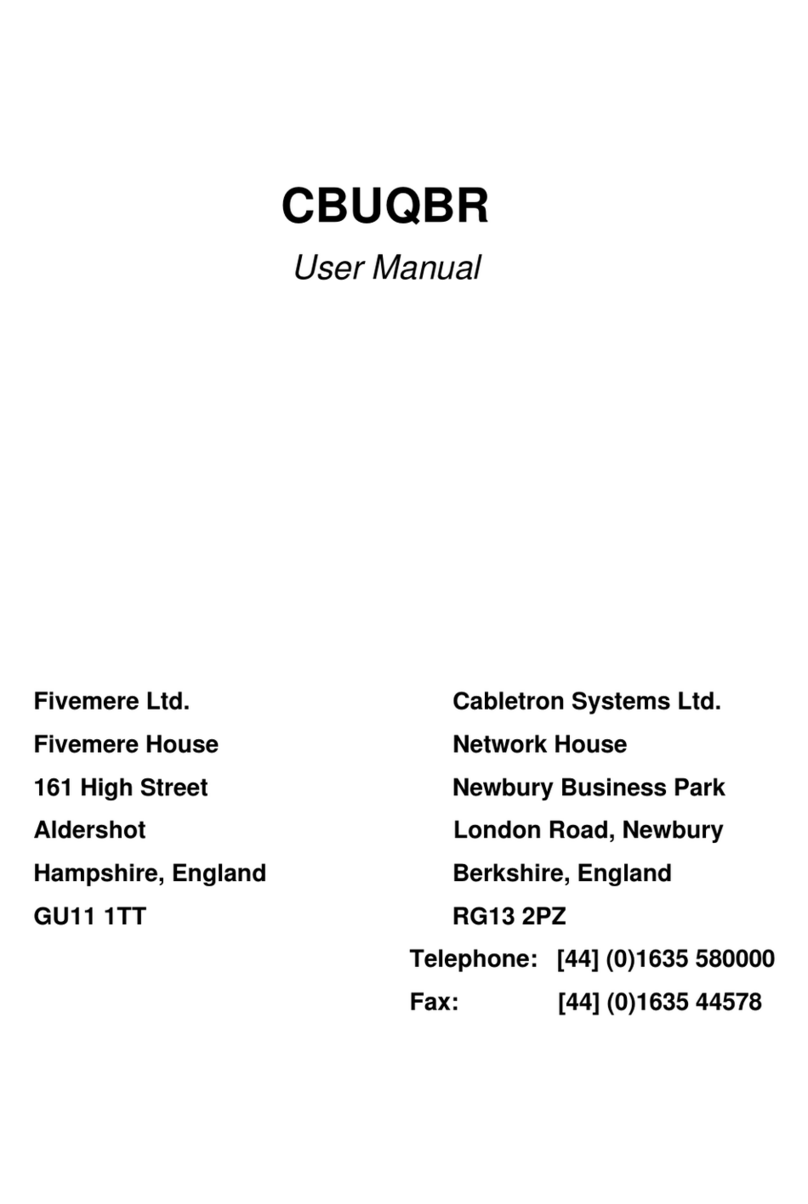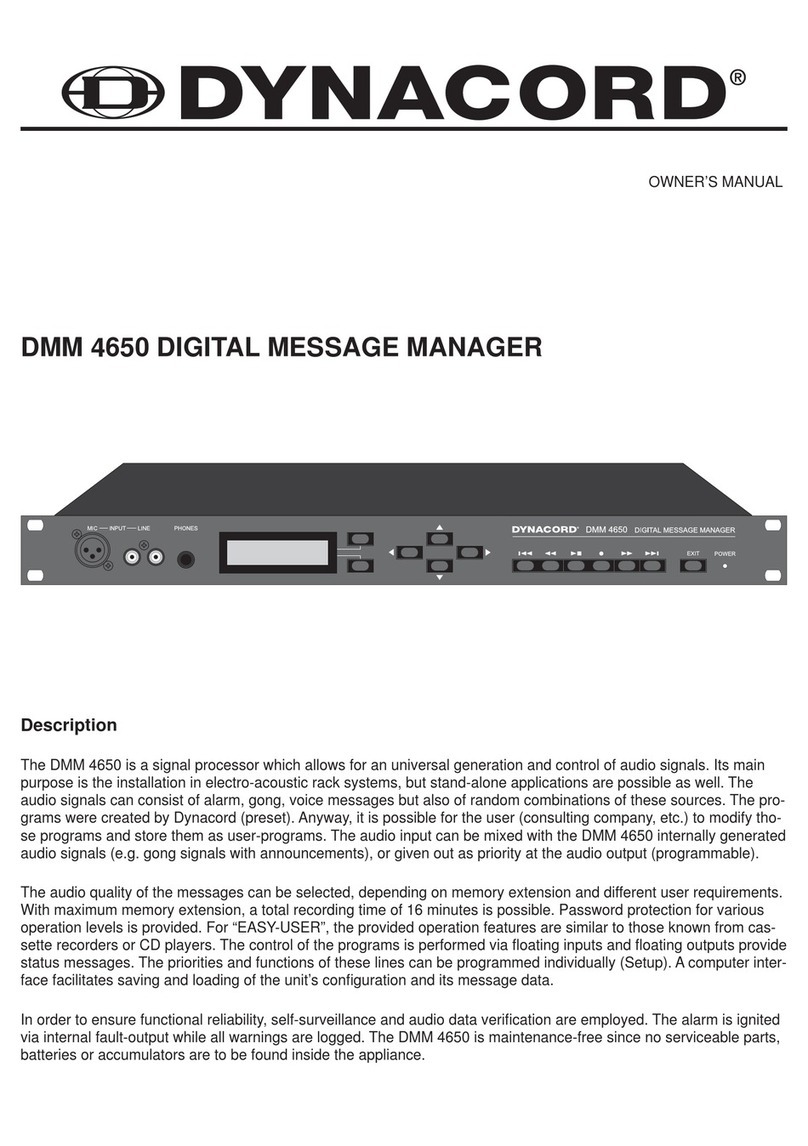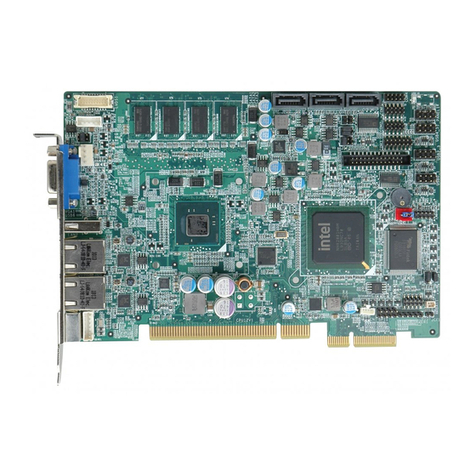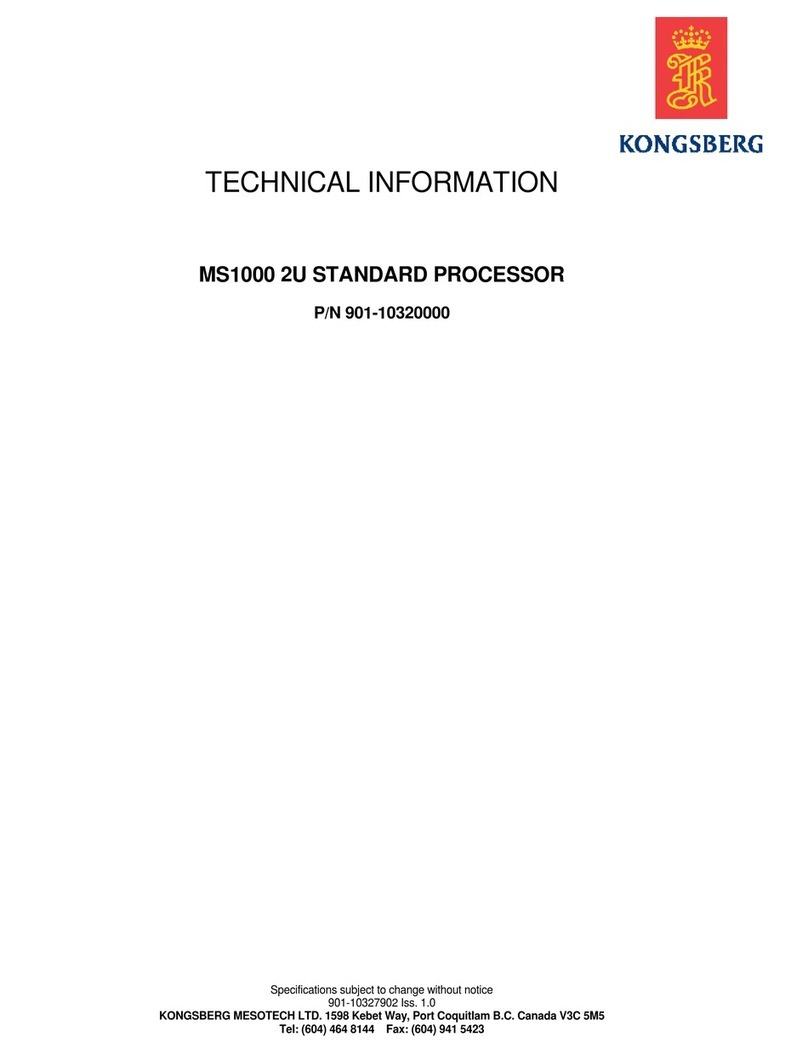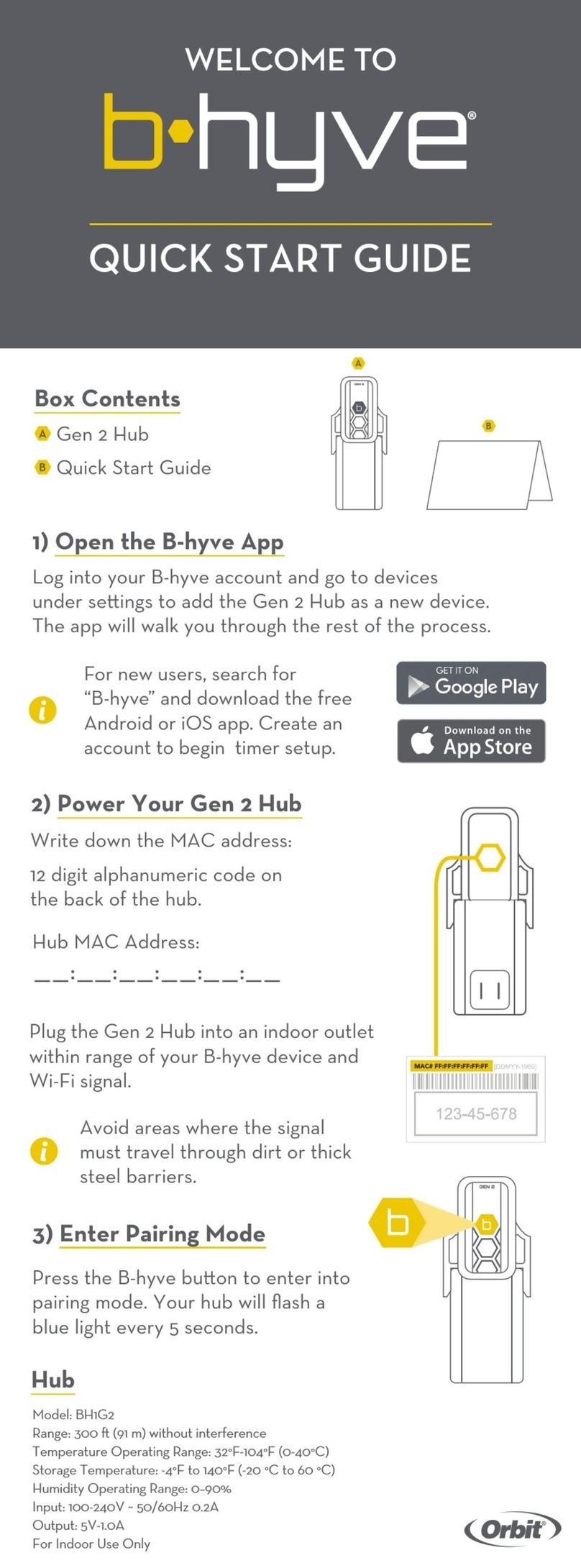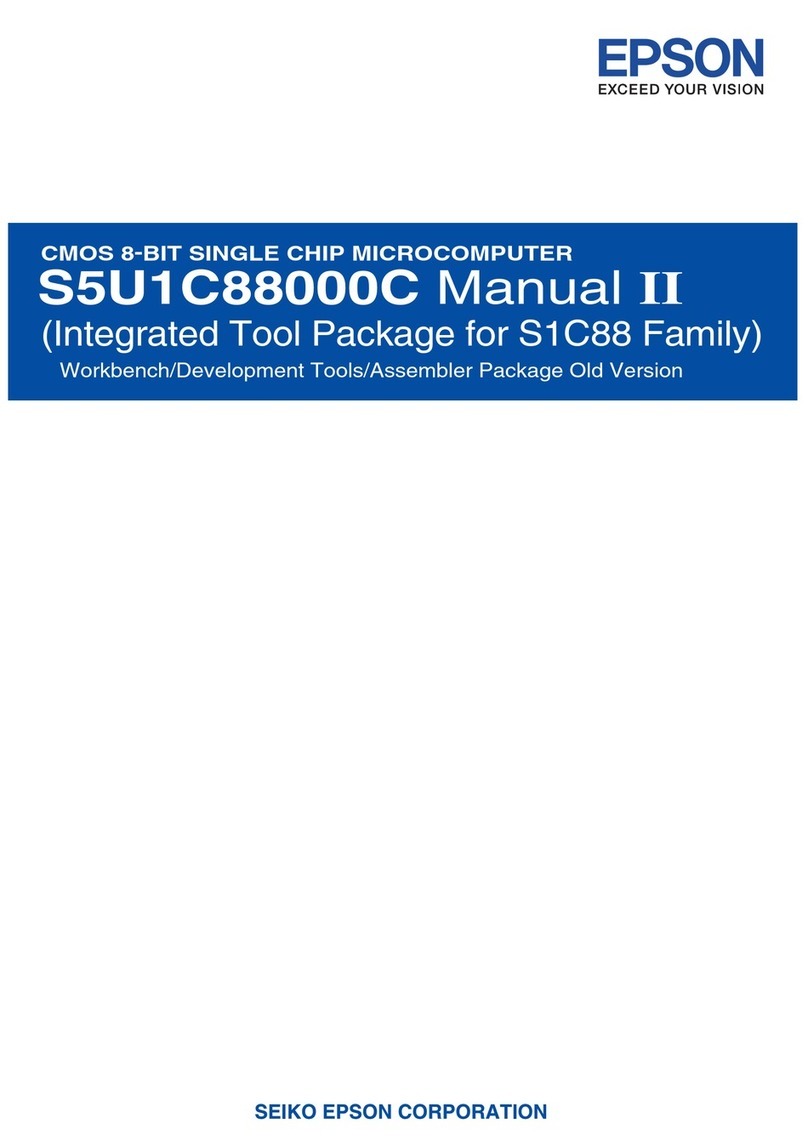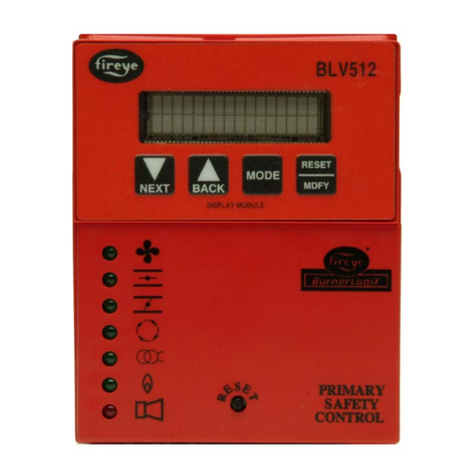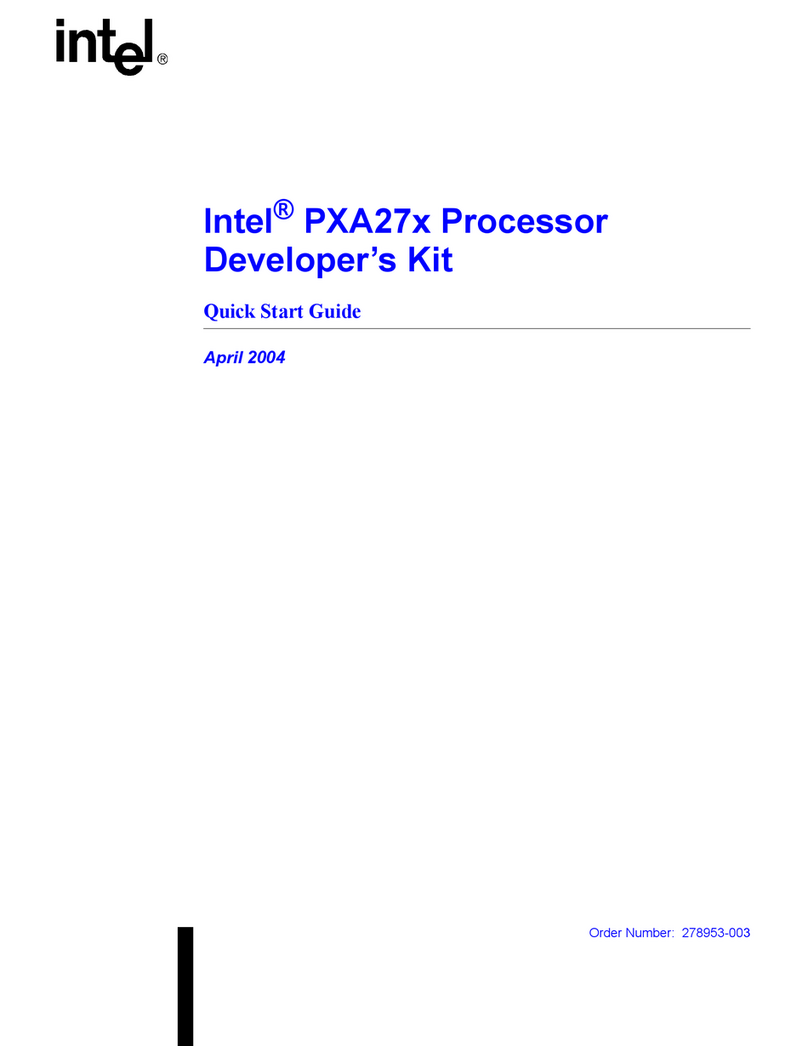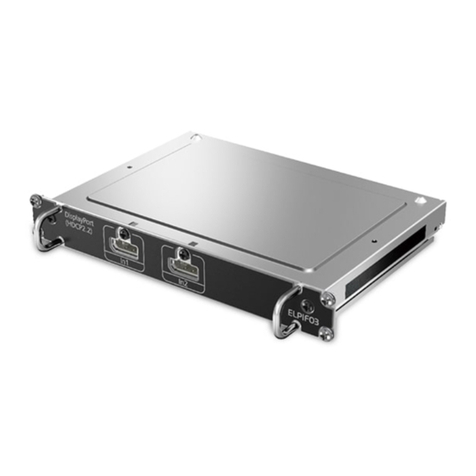Shiratech Stinger96 Instructions for use

Stinger96
Hardware User Manual Rev1.0

Page 1of 21
Stinger96 HW User Manual Rev1.0
/
www.shiratech-solutions.com
Document Revision History
Revision
Date
Author
Status and Description
0.13
22/07/2019
Ori Makover
Pre-Initial version
1.0
01/05/2020
Guy Zohar
First release
INDEX
1. Introduction ................................................................................................................2
2. Functional Block Diagram ............................................................................................3
3. Overview ................................................................................................................4
4. Additional Information ................................................................................................5
5. Running The Board For The First Time ..........................................................................6
6. Power Supply ................................................................................................................8
7. LTE BG96 Cat.M1/NB1 & EGPRS Module ......................................................................9
8. STM32MP157A ..............................................................................................................12
9. Low-Speed Connector ................................................................................................14
10. Power And Reset Buttons ..........................................................................................16
11. Micro SD Card Connector ...........................................................................................17
12. JTAG Connector ..............................................................................................................17
13. ST-Link Connector ..............................................................................................................18
14. SIM Card Connector ...................................................................................................18
15. USB0 + Power ..............................................................................................................19
16. USB1 + Console ..............................................................................................................19
17. IS43TR16640B-125JBL ................................................................................................20
18. MT29F8G08ABBCAH4-ITC ..........................................................................................21

Page 2of 21
Stinger96 HW User Manual Rev1.0
/
www.shiratech-solutions.com
1. Introduction
STINGER96 is a 96Boards IoT Edition compatible (IE extended) base board from Shiratech. The board
provides full support for 96Boards IoT Edition (IE) mezzanines via the Low Speed expansion connector, and
features LTE connectivity using the Quectel BG96 NB-IoT modem.
The board incorporates the following key elements:
•STM32MP157 microprocessor with dual Arm®Cortex®-A7 and Cortex®-M4 Cores, a very energy-
efficient, performance rich SoC, highly suitable for low-power embedded and consumer
applications.
•Quectel BG96 LTE, an ultra-low power consumption LTE Cat-M1/NB1/EGPRS module delivering
375Kbps downlink and 375Kbps uplink data rates. Also provides pin-to-pin compatibility with
Quectel LTE module EG91/EG95, Cat NB1 (NB-IoT) module BC95, UMTS/HSPA module UG95/UG96
and GSM/GPRS module M95.
•Running Yocto –A Linux distribution aimed for embedded and IoT software.
•96Boards Low Speed expansion connector, allowing the connection of additional 96Boards
mezzanines as needed.
•2 micro USB connectors (USB and monitor), a micro SD card connector and a micro SIM connector.

Page 3of 21
Stinger96 HW User Manual Rev1.0
/
www.shiratech-solutions.com
2. Functional Block Diagram
Stinger96 incorporates the following key elements:
•Mezzanine board connection is enabled via Low Speed Connectors, including 2 UART lines, 2 I2C
lines, GPIO A-L, SPI0 and PCM.
•The board is connected to a 5V power feed. The STPMIC1 provides additional 3.3V, 2.8V and 1.8V
to the various components.
•Quectel BG96 CAT -M1/NB1/GPRS Module:
oThe module is powered by 3.8V
oConnected to the CPU via UART and USB
oConnected to a micro SIM connector
oConnected to two RF antenna UFL jacks: Main and GNSS.
•8 Gbit NAND Flash MT29F8G08ABBCAH4-ITC, powered by 1.8V, and connected to the CPU via a 32-
bit bus.
•Two DDR-3 memories IS43TR16640B-125JBL, are powered by 1.1V, and are connected to the CPU
via a 32-bit bus.
•Micro SD-Card connector, connected to a 2.9V power supply. Connected to the CPU by SDIO.
•Micro USB –5V power supply and UART debug port
•Micro USB –Direct to CPU

Page 4of 21
Stinger96 HW User Manual Rev1.0
/
www.shiratech-solutions.com
•FT234XD-R USB to serial UART interface, powered by the 5V supply from the USB port, and
provides UART communication with the CPU.
3. Overview
QUECTEL
BG96
Main and
GNSS
Antenna UFL
Connectors
LS Expansion Connector STM32MP157 Debugger JTAG
DDR3
Reset
Button
Power
Button
Modem
LED’s
Micro USB
(USB0 +
Power)
Main and
GNSS Antenna
UFL
Connectors
QUECTEL BG96
BG96 Boot
Configuration
User LED’s
SIM Connector
SD Connector SIM Connector SLC NAND Flash Boot Select Micro USB (USB1+Console)

Page 5of 21
Stinger96 HW User Manual Rev1.0
/
www.shiratech-solutions.com
4. Additional Information
SoC: ST Microelectronics STM32MP157
CPU: 32 bit dual-core Arm®Cortex®-A7 and 32 bit Cortex®-M4 with FPU/MPU
GPU: Vivante® - OpenGL® ES 2.0
PMIC: STPMIC1
RAM: DDR3 –64M x 32bit (2Gbit/256MB)
Storage: SLC NAND FLASH –1G x 8bit (8Gbit/1GB) + micro SD connector.
Communication: Quectel BG96 LTE modem.
USB: 2 micro USB connectors
Expansion Interface: 40 pin low speed expansion connector: +1.8V, +5V, SYS_DCIN, GND, UART, I2C, SPI,
PCM, PWM,GPIO x12
LED: 4 x User LEDs and 2 x modem LEDs
Buttons: Power button and Reset button
Power Source: Micro USB Connector
OS Support: Yocto Linux distribution
Size: 85mm x 54mm x 12mm

Page 6of 21
Stinger96 HW User Manual Rev1.0
/
www.shiratech-solutions.com
5. Running The Board For The First Time
1. Download the image file from the downloads at: https://www.shiratech-
solutions.com/products/stinger96/
2. Insert a clean SD card to your PC, then burn the .img file to the SD card using a suitable tool
(Win32 Disk Imager for example).
3. Do not connect the board to the power supply yet.
4. To boot from SD card, change the boot select to 1 0 1. The boot select pins are ordered as
follows, top to bottom: Boot0, Boot1, Boot2. Please refer to the pin statuses highlighted in red
in the schematic below. (The photo is only intended to show the boot select pins location,
ignore their status in the photo).
SD Connector
Boot0
Boot1
Boot2

Page 7of 21
Stinger96 HW User Manual Rev1.0
/
www.shiratech-solutions.com
5. For other boot options, please refer to the STM32MP157 boot modes table:
6. Insert the SD card containing the image file to the SD card connector.
7. Connect the board to the PC using the micro USB connector. Make sure you connect using
USB1 + Console (the one next to the boot select pins).
8. Your board should now boot from the SD card. Open your device manager. The board should
appear under ‘Ports (COM & LPT)’.
9. Connect to the board through a serial connection using a suitable tool (PuTTY, for example).
Make sure you have picked the correct COM port (the one you see in the device manager), and
that you use the correct baud rate –115200.
BOOT2
BOOT1
BOOT0
Mode
0
0
0
UART and USB
0
0
1
Serial NOR Flash
0
1
0
e-MMC
0
1
1
NAND Flash
1
0
0
Reserved (NoBoot)
1
0
1
SD Card
1
1
0
UART and USB
1
1
1
Serial NAND Flash

Page 8of 21
Stinger96 HW User Manual Rev1.0
/
www.shiratech-solutions.com
6. Power Supply
The board draws 5V from the micro USB connectors. The green LED (D15) turns on when the board is
powered up.
The STPMIC accepts a 5V input voltage, and provides 1.1V, 1.2V, 1.8V, 2.9V and 3.3V voltages to power the
various components. It also features I2C and digital IO control interface, and a user programmable non-
volatile memory (NVM), enabling scalability to support a wide range of applications.

Page 9of 21
Stinger96 HW User Manual Rev1.0
/
www.shiratech-solutions.com
7. LTE BG96 Cat-M1/NB1 & EGPRS Module
BG96 is a series of LTE Cat-M1/NB1/EGPRS module offering a maximum data rate of 375Kbps downlink and
375Kbps uplink. It features ultra-low power consumption, and provides pin-to-pin compatibility with
Quectel LTE module EG91/EG95, Cat NB1 (NB-IoT) module BC95, UMTS/HSPA module UG95/UG96 and
GSM/GPRS module M95.
With a cost-effective SMT form factor of 26.5mm × 22.5mm × 2.3mm and high integration level, BG96
enables integrators and developers to easily design their applications and take advantage from the
module’s low power consumption and mechanical intensity. Its advanced LGA package allows fully
automated manufacturing for high-volume applications.
A rich set of Internet protocols, industry-standard interfaces (USB/UART/I2C/Status Indicator) and
abundant functionalities (USB drivers for Windows 7/8/8.1/10, Linux and Android) extend the applicability
of the module to a wide range of M2M applications such as wireless POS, smart metering, tracking, etc.
The Quectel BG96 CAT M1/Cat NB1/GPRS module is powered by 3.8V.
Connected to a micro SIM connector.
RF lines connected to two RF antenna UFL jacks: Main and GNSS.
Two LEDs are used to indicate modem status.

Page 10 of 21
Stinger96 HW User Manual Rev1.0
/
www.shiratech-solutions.com

Page 11 of 21
Stinger96 HW User Manual Rev1.0
/
www.shiratech-solutions.com

Page 12 of 21
Stinger96 HW User Manual Rev1.0
/
www.shiratech-solutions.com
8. STM32MP157A
The STM32MP157A devices are based on the high-performance dual-core Arm®Cortex®-A7 32-bit RISC core
operating at up to 650 MHz. The Cortex-A7 processor includes a 32-Kbyte L1 instruction cache for each
CPU, a 32-Kbyte L1 data cache for each CPU and a 256-Kbyte level2 cache. The Cortex-A7 processor is a
very energy-efficient application processor designed to provide rich performance in high-end wearables,
and other low-power embedded and consumer applications. It provides up to 20% more single thread
performance than the Cortex-A5 and provides similar performance than the Cortex-A9.
The Cortex-A7 incorporates all features of the high-performance Cortex-A15 and Cortex-A17 processors,
including virtualization support in hardware, NEON™, and 128-bit AMBA®4 AXI bus interface.
The STM32MP157A devices also embed a Cortex®-M4 32-bit RISC core operating at up to 209 MHz
frequency. Cortex-M4 core features a floating point unit (FPU) single precision which supports Arm® single-
precision data-processing instructions and data types. The Cortex®-M4 supports a full set of DSP
instructions and a memory protection unit (MPU) which enhances application security.
The STM32MP157A devices also embed a 3D graphic processing unit (Vivante® - OpenGL® ES 2.0) running
at up to 533 MHz, with performances up to 26 Mtriangle/s, 133 Mpixel/s.
The STM32MP157A devices provide an external SDRAM interface supporting external memories up to 8-
Gbit density (1 Gbyte), 16 or 32-bit LPDDR2/LPDDR3 or DDR3/DDR3L up to 533 MHz.
The STM32MP157A devices incorporate high-speed embedded memories with 708 Kbytes of Internal SRAM
(including 256 Kbytes of AXI SYSRAM, 3 banks of 128 Kbytes each of AHB SRAM, 64 Kbytes of AHB SRAM in
backup domain and 4 Kbytes of SRAM in backup domain), as well as an extensive range of enhanced I/Os
and peripherals connected to APB buses, AHB buses, a 32-bit multi-AHB bus matrix and a 64-bit multi layer
AXI interconnect supporting internal and external memories access.
All the devices offer two ADCs, two DACs, a low-power RTC, 12 general-purpose 16-bit timers, two PWM
timers for motor control, five low-power timers, a true random number generator (RNG). The devices
support six digital filters for external sigma delta modulators (DFSDM). They also feature standard and
advanced communication interfaces.
Stinger96 base board has two 1Gbit S43TR16640B-125JBL DDR memories, connected to the CPU module via
a 32-bit bus, and a single MT29F8G08ABBCAH4-ITC 8 Gbit NAND Flash memory, connected to the CPU
module via 32-bit bus.

Page 13 of 21
Stinger96 HW User Manual Rev1.0
/
www.shiratech-solutions.com
CPU Speed
650 MHz
DDR Memory Capacity
1Gbit
DDR Memory Maximum Speed
1066 MHz
Flash Memory Capacity
8Gbit
USB0
Power (OTG)
USB1
Console (UART7)
The Low-Speed connector deploys:
•2 UART communication lines
•2 I2c lines
•PCM
•SP10
•GPIO A-L

Page 14 of 21
Stinger96 HW User Manual Rev1.0
/
www.shiratech-solutions.com
9. Low-Speed Connector
Stinger96 supports a standard 96Boards 40 pin Low-Speed expansion connector with 1.8V logic
levels. The connector contains the following interfaces:
•UART0
•UART1
•2 x I2C
•I2S
•12 x GPIO
•Reset button
•Power button
Connects to
Description
Pin
#
Pin
#
Description
Connects to
GND
GND
1
2
GND
GND
UART4_CTS
UART0_CTS
3
4
PWR_BTN_N
POWER_ON_PMIC
UART4_TX
UART0_TxD
5
6
RST_BTN_N
NRST
UART4_RX
UART0_RxD
7
8
SPI0_SCLK
SPI1_SCK
UART4_RTS
UART0_RTS
9
10
SPI0_DIN
SPI1_MISO
UART5_TX
UART1_txD (O)
11
12
SPI0_CS
SPI1_NSS
UART5_RX
UART1_RxD (O)
13
14
SPI0_DOUT
SPI1_MOSI
I2C2_SCL
I2C0_SCL
15
16
PCM_FS (O)
I2S2_WS
I2C2_SDA
I2C0_SDA
17
18
PCM_CLK (O)
I2S2_CK
I2C5_SCL
I2C1_SCL (O)
19
20
PCM_DO (O)
I2S2_SDI
I2C5_SDA
I2C1_SDA (O)
21
22
PCM_DI (O)
O2S2_SDO
STM-PG0
GPIO-A
23
24
GPIO-B
STM-PG7
STM-PG2
GPIO-C
25
26
GPIO-D
STM-PG8
STM-PG3
GPIO-E
27
28
GPIO-F
STM-PG10
STM-PG4
GPIO-G
29
30
GPIO-H
STM-PG12
STM-PG5
GPIO-I
31
32
GPIO-J
STM-PG6
GPIO-K
33
34
GPIO-L
VDD
+1.8V
35
36
NC
Vin_USB
Vin-5V
+5V
37
38
NC
Vin_USB
GND
GND
39
40
GND
GND

Page 15 of 21
Stinger96 HW User Manual Rev1.0
/
www.shiratech-solutions.com

Page 16 of 21
Stinger96 HW User Manual Rev1.0
/
www.shiratech-solutions.com
10. Power and Reset Buttons
Pressing the Power button generates low level signal that initiates the PMIC voltage shutdown sequence,
followed by the voltage power up sequence (when released).
Pressing the Reset button generates low level reset command to the SOC resulting in a soft reset.

Page 17 of 21
Stinger96 HW User Manual Rev1.0
/
www.shiratech-solutions.com
11. Micro SD Card Connector
Powered by 2.9V power supply and connected to the CPU SDIO lines via voltage translator to support low
voltage SD card mode.
12. JTAG Connector
10 pin JTAG header directly connected to the CPU JTAG lines and 1.8V power supply.

Page 18 of 21
Stinger96 HW User Manual Rev1.0
/
www.shiratech-solutions.com
13. ST-Link Connector
4 pin ST-Link header directly connected to the CPU. Connected to a 1.8V power supply.
14. SIM Card Connector
Directly connected to SIM interface lines in the BG96. Powered, utilized and managed by the BG96 module.

Page 19 of 21
Stinger96 HW User Manual Rev1.0
/
www.shiratech-solutions.com
15. USB0 + Power
USB lines connected to the CPU and power lines provide 5V voltage.
16. USB1 + Console
Connected to the CPU through the FT234XD-R which translates USB to UART (UART7). This connection
enables the Linux monitor communication with the board. Provides 5V voltage.
Table of contents
Other Shiratech Computer Hardware manuals
